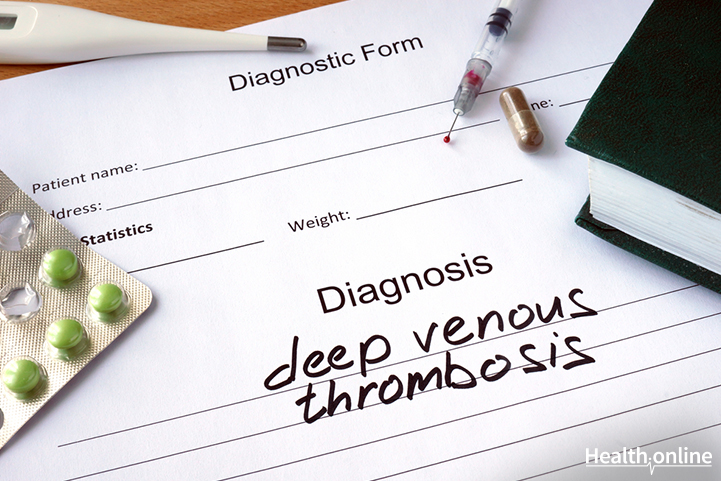
Complications & Diagnosis of DVT
Complications:
The major complication associated with DVT is when the thrombus is dislodged and becomes an embolism. When the thrombus becomes an embolus, it is free to travel to the lungs. The result is a pulmonary embolism.
A pulmonary embolism (PE) is a medical emergency, and requires immediate evaluation for possible intervention. A pulmonary embolism can be life-threatening. Signs and symptoms commonly associated with a PE include: acute onset of shortness of breath, chest pain which worsens with deep inspiration; dizziness, palpitations or fast heart rate, and hemoptysis. Seek medical attention immediately if these signs/symptoms manifest themselves.
Postphlebitic (Post Thrombotic) syndrome is another common complication of DVTs. When there is a DVT, it means that there is a thrombus within the deep venous system. The thrombus or stationary clot is obstructing blood flow. Because blood flow is being obstructed, the flow is diminished, and the result may cause prolonged lower extremity edema, leg pain, skin color changes and skin ulcer formation.
Diagnosis:
The first step to diagnosing a DVT is to consult with a physician to determine if the signs/symptoms present necessitate further evaluation for possible DVT. If the reason for suspected DVT is due to a medical condition that results in a hyper-coagulable state, then the appropriate laboratory testing to confirm such diagnosis will be necessary, in order to implement appropriate treatment.
Routine laboratory blood work to assess for possible DVT includes: D-dimer, anti-thrombin III, NT-proBNP, CRP and ESR. The D-dimer blood test is highly-sensitive, but not specific. If the D-dimer is low or negative, then the patient has a very low chance of DVT. If negative, it basically rules out the possibility of DVT. However, if it is positive, then a DVT cannot be ruled out. It is not specific for only DVT, but DVT should be on the differential diagnosis if the appropriate symptoms are present.
Doppler ultrasound of the deep venous system is usually required to determine if DVT is present. When a patient presents with signs/symptoms indicative of DVT, then a doppler ultrasound will likely be ordered by the physician to determine the location of the DVT, and which deep vein is involved, whether it is lower extremity or upper extremity. These ultrasounds can help to evaluate if the blood clot is expanding, or remaining the same.
A Venography is an invasive, and expensive, method to conclusively diagnose DVT. In Venography, dye is injected into a deep vein within the foot or ankle. After the dye is injected and moves through the venous system, an X-ray is performed so that a map of the veins can be obtained. Through evaluation of these veins, DVT can be identified.
If the patient presents with signs/symptoms that indicate the thrombus has dislodged and has now become an embolus, then additional imaging studies are necessary. Two imaging studies that are imperative to the appropriate diagnosis of PE include: V/Q perfusion scan, and CT angiography of the chest (CTA). The V/Q perfusion scan takes some time to complete, so in the emergent setting a CTA may be more appropriate if immediate intervention is required. A V/Q perfusion scan is a nuclear medicine scan, that uses a radioactive component to evaluate ventilation and blood flow within the lungs. There are two portions to the V/Q scan. During the first portion of the V/Q scan, the patient is administered a specific radioactive material via nebulizer, which evaluates the airflow within the lungs. During the second portion of the V/Q scan a different radioactive material is administered via IV, and blood flow within the lungs is evaluated via imaging. If there is a PE present, then the V/Q scan will show greater than or equal to two mismatched V:Q segment defects. A CTA (CT angiography) is an imaging study that can evaluate for a PE. The CTA utilizes IV contrast to evaluate the vasculature of the lungs, paying special attention to the pulmonary arteries.




